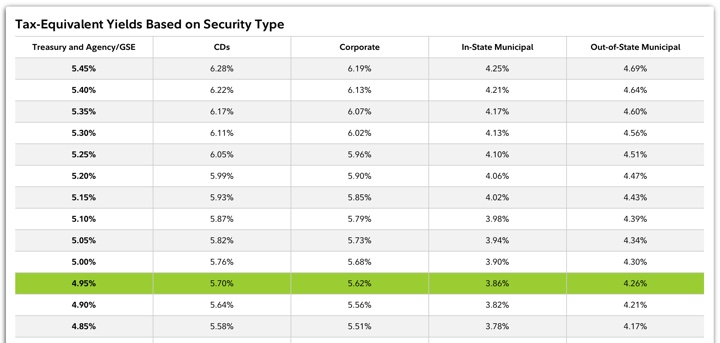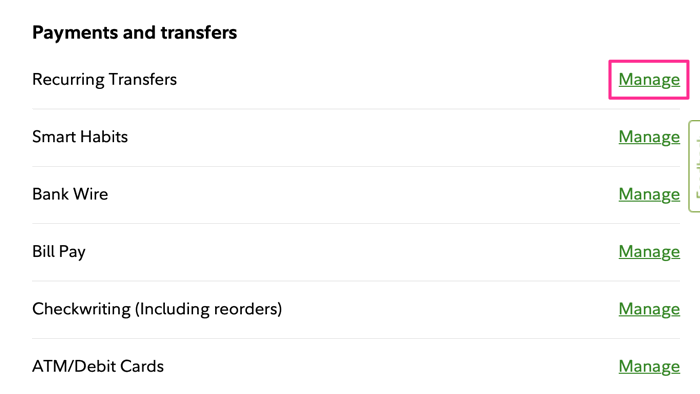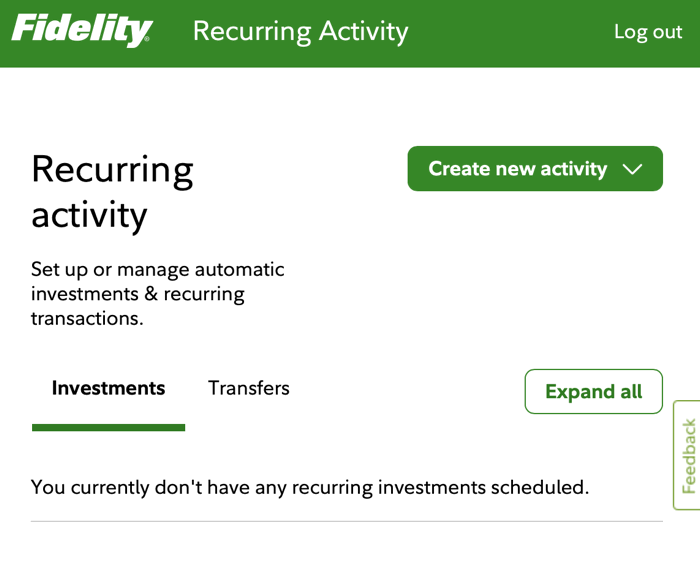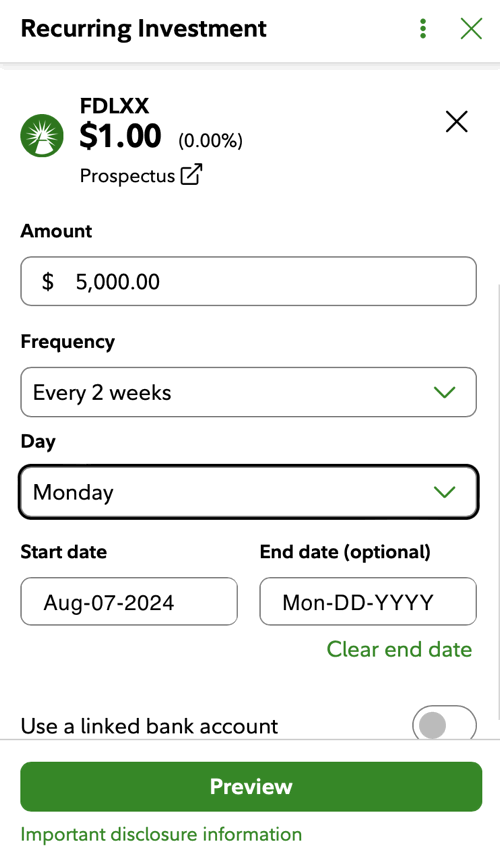While it was welcome news that Fidelity now allows the Fidelity Government Money Market Fund (SPAXX) as a core position for their Cash Management Account as of June 2024, for many of us that reside in states in high state income tax rates, our net after-tax yield would still be much better if we were allowed to use the Fidelity Treasury Only Money Market Fund (FDLXX) as our core position instead.
This is because the interest from US government obligations like Treasury bills are exempt from state income taxes. (The Constitution declares that states are not allowed tax the Federal government.)
Many states have an income tax, but if you live in California, Connecticut, and New York, you should know that in 2023 neither Fidelity Government Money Market Fund (SPAXX) nor Fidelity® Treasury Money Market Fund (FZFXX) met the minimum investment in U.S. government securities required to exempt the distribution from tax in California, Connecticut, and New York. (Despite having Treasury in the name, FZFXX only had about 20% in eligible Treasury interest.) These are the core positions available in the standard Fidelity Account. Meanwhile, Fidelity Treasury Only Money Market Fund (FDLXX) did meet those requirements in 2023 with roughly 90% of interest eligible for exemption. (Source)
As of 8/4/24, the SEC yield of SPAXX was 4.98% and FDLXX was 4.95%. Pretty close. But if you assume a 10% state income tax rate, SPAXX would have to yield at least about 5.50% to equal the after-tax yield of FDLXX. This is just a ballmark estimate, and you can use Fidelity’s Tax-Equivalent Yield Calculator to get a more accurate number for your specific household.

Now, you can manually purchase FDLXX at any time with your SPAXX balance with no transaction fees. However, if you get any new money like a paycheck direct deposit or dividend payment, it will automatically be used to purchase the core position (i.e. SPAXX). You’ll then have to make another manual purchase of FDLXX to convert that SPAXX to FDLXX. This is tedious and easy to forget about.
A workaround to this solution is to set up an automatic recurring purchase of FDLXX. Thanks to a comment from reader Henry and also this rFidelity post (actually multiple posts) where an official Fidelity rep confirmed that the mechanics work.
You’re on the right track; auto-liquidation of the Fidelity Treasury Only Money Market Fund (FDLXX) will occur to fund your recurring investment plan in this situation. Fidelity will attempt to cover debit balances created, whether through trades, direct debits, checkwriting, or even BillPay, by first using funds in your core balance. Once the core balance is depleted, the system will turn to any eligible secondary money market funds to cover the transaction.
As a recurring investment plan falls under the blanket of trades, auto liquidation will still be at play.
It’s important to note that not all non-core money markets are eligible for automatic liquidation to cover purchases. It is best practice to sell non-core money markets in advance of expected purchases, but you can also ask us about specific money markets to confirm their eligibility. As I alluded to above, FDLXX is eligible for auto-liquidation.
The mechanics. Depending on your cashflow patterns, you might set up a $1,000 weekly recurring purchase of FDLXX. If you have $1,000 in SPAXX (core), that will be used to purchase $1,000 of FDLXX. If you only have $150 of SPAXX, then $150 of SPAXX will be sold first AND $850 of FDLXX will be sold, and that will be used to purchase $1,000 of FDLXX. This is because FDLXX is classified as an “eligible secondary money market fund” and will auto-liquidate to satisfy your $1,000 purchase request, even though it’s effectively “buying itself”. If you don’t have enough FDLXX or other funds available, your scheduled purchase will be skipped that instance, but the recurring purchase plan will stay in place. Importantly, things like your stock holdings are NOT eligible for such auto-liquidation.
(Note: If you hold multiple money market funds, there is an order in which Fidelity will liquidate your money markets will liquidate. First the core position, next any taxable money markets, then any tax-exempt money markets (munis). Within each category, Fidelity draw from the fund with the highest balance first. Not all non-core money markets are eligible for automatic liquidation to cover purchases. Source.)
Here’s how to set up a recurring investment at Fidelity.
If you decide to proceed, you can set up a recurring investment by following the steps below after logging in on the website:
Expand the “Accounts & Trade” tab
Choose “Account Features”
Click “Manage” next to Recurring Transfers
You can set up recurring investments on a weekly, biweekly, or monthly basis.
A few screenshots:



Set up properly, this should keep your SPAXX balance at a minimum and regularly shoveled into FDLXX. It’s still a little messy but it’s the best workaround currently available. I have been using my Fidelity CMA as my new primary checking account and it has been working out pretty well so far.




